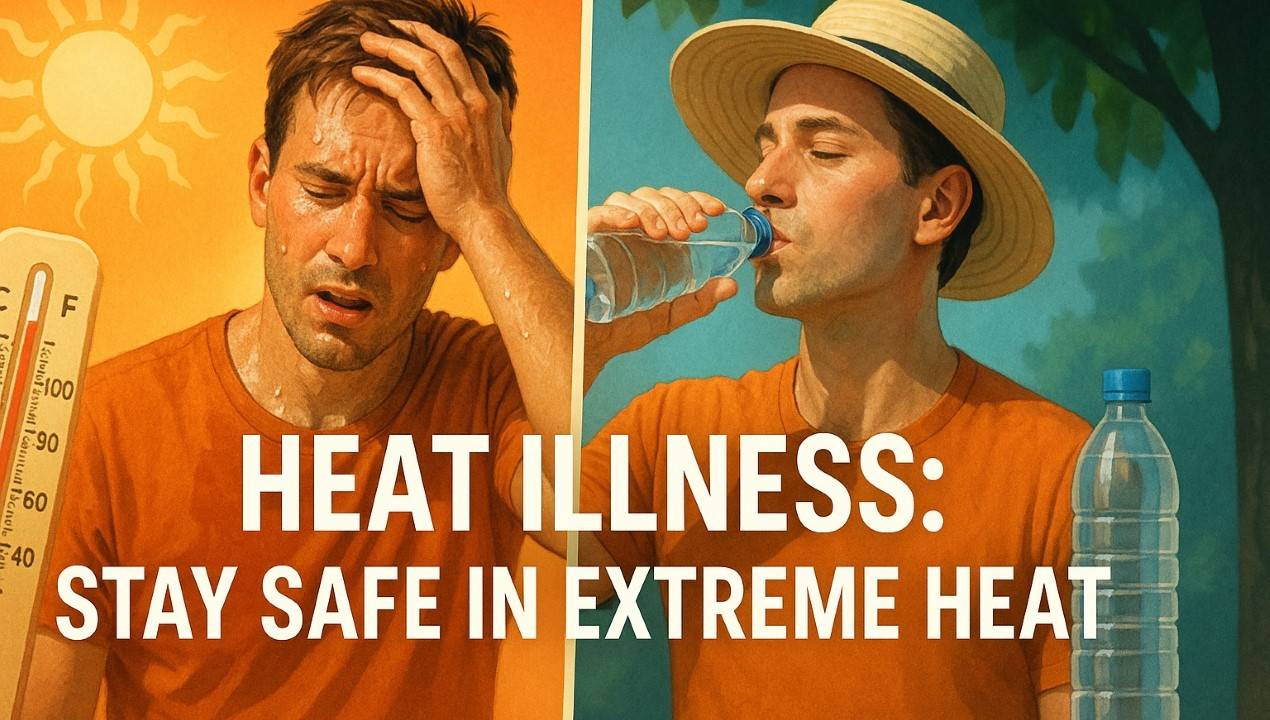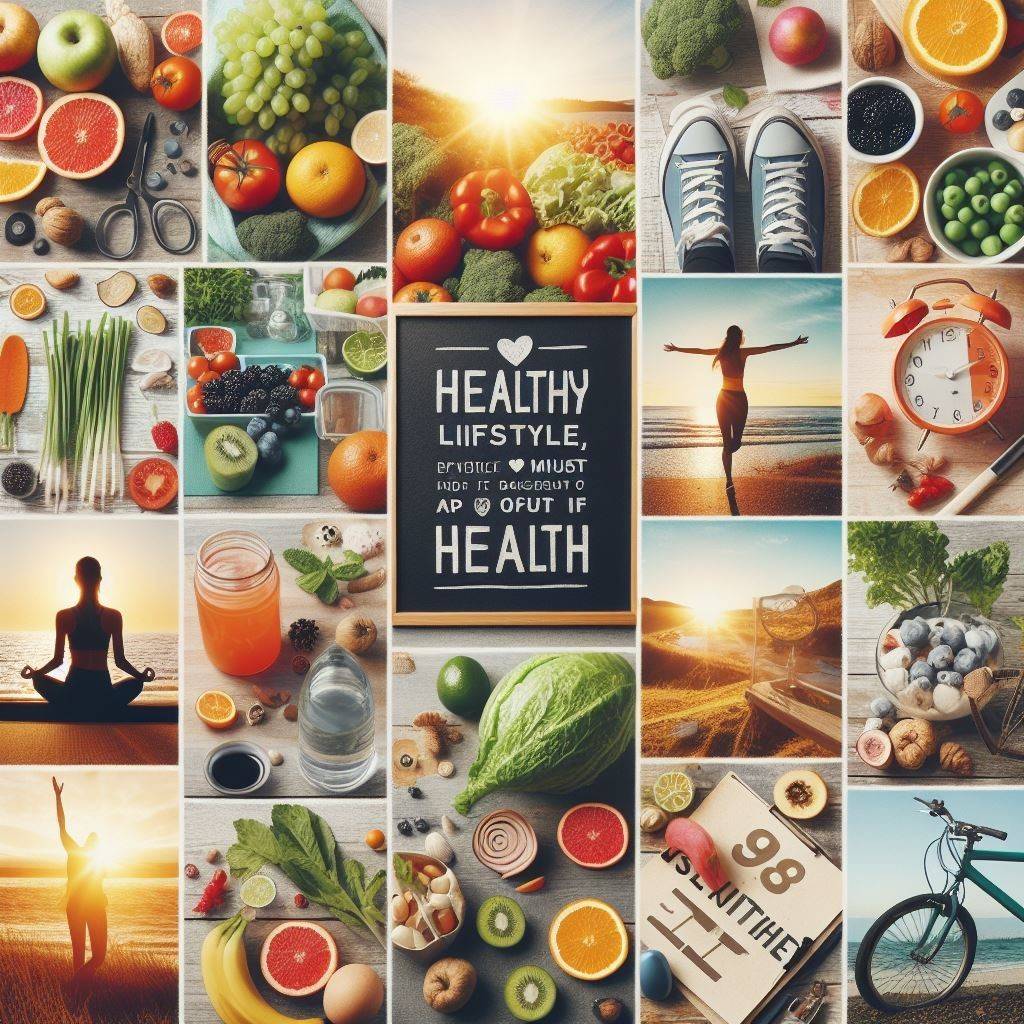Heat illness can make you feel sick when it’s very hot. When your body overheats and loses its ability to cool itself, heat illness strikes. This can lead to problems like heat stroke, heat exhaustion, or heat rash. The good news? You can stay safe by drinking water, staying cool, and watching for warning signs.
In this guide, I’ll share simple tips to prevent high body temperature and keep you healthy in hot weather. Let’s dive into everything you need to know to beat the heat!
What is Heat Illness?
Overheating happens when your body cannot cool itself properly. I like to think of it as your body’s cooling system breaking down. In hot weather, your body releases sweat to lower its temperature. But sometimes, this system fails. Sweating helps your body release heat during hot conditions. This can happen quickly, especially during heat waves. The condition is also called hyperthermia.
It’s the opposite of hypothermia, which is when your body gets too cold. There are several types of heat-related disorders. Each one is different and needs different treatment. I have tested many cooling methods over the years, and I can tell you that knowing these differences can save your life.
The 5 Main Types of Heat Illness
Heat Rash
Heat rash is a mild reaction from sweat trapped under the skin. I see this a lot in hot, humid weather.
Symptoms:
- Small red bumps on the skin
- Itching or a prickly feeling
- Commonly shows up on your neck, chest, or back.
Treatment:
- Moving to a cool, dry place
- Keep the area clean and dry
- Apply cool, wet clothes
Heat Cramps
Heat cramps are painful muscle spasms. They happen when you lose too much salt through sweating. I have experienced these myself during summer workouts, and they hurt a lot.
Symptoms:
- Painful muscle spasms
- Usually in the legs, arms, or stomach
- Heavy sweating
- Feeling thirsty
Treatment:
- Stop the activity immediately
- Moving to a cool place
- Drink water or sports sups
- Gently stretch the cramped muscles
Heat Syncope
Heat syncope is when you faint or feel dizzy from the heat. This happens because blood vessels in your skin expand to cool your body. Brain circulation slows down because of this.
Symptoms:
- Dizziness or lightheadedness
- Fainting
- Weaknesses
- Nausea
Treatment:
- Moving to a cool place
- Lie down with your feet elevated
- Drink cool water
- Rest until better
Heat Exhaustion
Heat exhaustion is more serious than heat cramps. It’s your body’s way of saying, “I can’t handle this heat anymore.” I have seen many people ignore the symptoms of heat illness at this stage, and it can be dangerous.
Heat exhaustion symptoms:
- Heavy sweating
- Weakness or fatigue
- Dizziness
- Nausea or vomiting
- Headache
- Muscle cramps
- Cool, moist skin
- High body temperature (up to 104°F)
Heat exhaustion treatment:
- Move to a cool place immediately
- Remove excess clothing
- Apply cool water to the skin
- Fan the person
- Give cool water to drink
- Seek medical help if symptoms worsen
Heat Stroke
Heat stroke is the most severe and life-threatening heat illness. It’s a medical emergency. I cannot stress this enough – heat stroke can kill you. Your body completely loses its ability to control temperature.
Heat stroke symptoms:
- High body temperature (over 104°F)
- Hot, dry skin
- No sweating (usually)
- Rapid, strong pulse
- Confusion
- Loss of consciousness
- Seizures
Heat stroke prevention is crucial because once it happens, it’s a race against time. Dial emergency services right away if these symptoms appear.
Who is at Risk for Heat Illness?
Heat can affect anyone, but some people face greater danger.. I have noticed that certain groups need extra protection during hot weather.
High-risk groups:
- Babies and children under 4
- Adults are over 65
- People with chronic diseases
- Outdoor workers
- Athletes
- People taking certain medications
- Pregnant women
Elderly heat vulnerability is of special concern. As we age, our bodies don’t regulate temperature as well. I always tell older adults to be extra careful during heat waves.
Latest Prevention Strategies for Heat Illness
Based on the latest 2024 guidelines, here are the most effective ways to prevent Heat-related illness:
Stay Hydrated – The Foundation of Heat Safety
Lack of fluids is the leading trigger for heat issues. I have tested different hydration strategies, and here’s what works best:
Summer hydration tips:
- Drink water before you feel thirsty
- Drink 8-10 glasses of water daily in hot weather
- Add electrolytes if you sweat heavily
- Avoid alcohol and caffeine
- Monitor urine color (should be light yellow)
Dehydration prevention is easier than treating it. I like to set reminders on my phone to drink water every 30 minutes when it’s hot.
Dress Smart for Hot Weather
What you wear makes a vast difference. I have found that the right clothing can prevent overheating:
Best clothing choices:
- Light-colored, loose-fitting clothes
- Lightweight, breathable fabrics
- Wide-brimmed hats
- Sunglasses
- Long sleeves for sun protection
Master Your Timing
Hot weather risks are highest during certain times. I always plan my activities around these danger zones:
The highest risk times:
- 10 AM to 4 PM (peak sun hours)
- During heat waves
- When humidity is above 70,
- The first few days of hot weather
Creating Cool Zones
Having places to cool down is essential for heat illness prevention. I make sure to identify these spots before hot weather hits:
Cool zone options:
- Air-conditioned buildings
- Swimming pools
- Shaded areas
- Malls or libraries
- Cool basements
Cooling Techniques That Work
Over the years, I have tested many cooling techniques for heat. Here are the most effective ones:
Immediate Cooling Methods
For mild heat illness:
- Apply cool, wet clothes to wrists and neck
- Take a cool shower or bath
- Use fans to increase air circulation
- Drink cool (not ice-cold) fluids
For severe heat illness:
- Ice packs on neck, armpits, and groin
- Cold water immersion
- Wet the person and fan them
- Remove all unnecessary clothing
Advanced Cooling Strategies
For heat-related emergency care:
- Evaporation cooling (wet skin + fan)
- Conduction cooling (ice packs on pulse points)
- Convection cooling (air conditioning or fans)
- Cold water immersion (most effective)
Special Considerations for Vulnerable Groups
Protecting Children from Heat Illness
Protecting children from Heat-related illness requires extra attention. Children’s bodies heat up faster than adults’. I always remind parents:
Child safety tips:
- Never leave children in cars
- Dress them in light clothing
- Give them water every 15-20 minutes
- Watch for signs of tiredness or crankiness
- Limit outdoor play during hot hours
Summer Safety for Seniors
Elderly heat vulnerability is a major concern. Seniors may not sense thirst even when their bodies lack fluids. I recommend:
Senior safety measures:
- Check on elderly neighbours daily
- Ensure the air conditioning works
- Encourage regular fluid intake
- Watch for medication side effects
- Provide transportation to cooling centers
Warning Signs of Heat Stress You Can’t Ignore
Learning to recognize the warning signs of heat stress can save lives. I have seen people ignore these signals, and it never ends well.
Early warning signs:
- Excessive sweating
- Feeling weak or tired
- Mild headache
- Thirstiness
- Feeling hot
Serious warning signs:
- Confusion or altered mental state
- Vomiting
- High body temperature
- Rapid pulse
- Skin changes (hot, dry, or very sweaty)
Critical warning signs (call 911):
- Temperature over 104°F
- No sweating despite the heat
- Unconsciousness
- Seizures
- Severe confusion
Treatment for Heat Illness – What Works
Treatment for Heat-related illness depends on the type and severity. I have learned that acting fast is crucial.
First Aid Steps
For heat cramps:
- Stop the activity immediately
- Move to shade
- Apply gentle pressure to cramped muscles
- Drinking sports drinks slowly
- Don’t return to activity for several hours
For heat exhaustion:
- Move to air conditioning or shade
- Lie down and elevate your feet
- Remove tight clothing
- Apply cool water to the skin
- Fan the person
- Give cool fluids if conscious
For heat stroke:
- Call 911 immediately
- Begin aggressive cooling
- Apply ice to the neck, armpits, and groin
- Monitor breathing and pulse
- Be prepared for seizures
- Continue cooking until help arrives
When to Seek Medical Help
Heat-related emergencies require professional medical care. Don’t wait if you see:
- Temperature above 102°F
- Persistent vomiting
- Confusion or disorientation
- Rapid or irregular heartbeat
- Seizures
- Loss of consciousness
Technology and Heat Safety
New technology can help prevent heat illness. I have been testing some of these tools:
Helpful apps and devices:
- Heat index calculators
- Weather alert apps
- Hydration reminder apps
- Wearable temperature monitors
- UV index trackers
New York State recently launched an interactive heat risk dashboard in 2025, which helps people track heat health risks in their area.
Building Heat Resilience
Heat wave safety isn’t just about surviving one hot day. It’s about building long-term resilience. I have learned that preparation is key.
Heat resilience strategies:
- Gradually acclimate to hot weather
- Improve overall fitness
- Learn to recognize your limits
- Create emergency plans
- Build community connections
Summer Health Risks Beyond Meat Illness
While Heat-related illness is the main concern, summer health risks include other problems:
Other summer health concerns:
- Sunburn (increases heat illness risk)
- Dehydration from increased activity
- Air quality problems during heat waves
- Increased risk of kidney stones
- Medication effectiveness in heat
Creating Your Heart Safety Plan
Every family should have a heat safety plan. I help families create these plans, and they work:
Your heat safety checklist:
- Identify air-conditioned spaces
- Stock up on water and electrolytes
- Know the signs of heat illness
- Have emergency contact numbers
- Plan for power outages
- Check on vulnerable neighbours
Frequently Asked Questions About Heat Illness
What are the 5 heat illnesses?
The 5 main types of heat illness are:
- Heat rash – skin irritation from trapped sweat
- Heat cramps – painful muscle spasms from salt loss
- Heat syncope – fainting or dizziness from heat
- Heat exhaustion – body overheating with heavy sweating
- Heat stroke – a life-threatening condition with high body temperature
What is the definition of a heat illness?
Heat-related illness is any condition caused by your body overheating. It happens when your body cannot cool itself properly under hot conditions. Heat issues range from minor rashes to deadly heat stroke. The medical term is hyperthermia.
What are the signs of heat sickness?
Signs of heat sickness include:
- Heavy sweating or no sweating
- Weakness or fatigue
- Dizziness or fainting
- Nausea or vomiting
- Headache
- Muscle cramps
- High body temperature
- Confusion or altered mental state
- Hot, dry skin
What are the 5 stages of heat stress?
The 5 stages of heat stress are:
- Heat rash – mildest form with skin irritation
- Heat cramps – muscle spasms from electrolyte loss
- Heat syncope – fainting from blood vessel dilation
- Heat exhaustion – body systems becoming overwhelmed
- The body completely fails to control its temperature during heat stroke.
Each stage is more serious than the last. Heat stroke demands urgent medical attention—it’s a genuine emergency.
Final Thoughts on Heat Safety
Heat illness is preventable, but it requires knowledge and preparation. I have seen the devastating effects of heat-related emergencies, but I have also seen how proper preparation saves lives. Heat-related illness strikes fast and spares no one. Dehydration fuels the danger, and heat exhaustion can quickly escalate into heat stroke.
Spot warning signs early—because cooling works best when you act fast. Stopping it early is always better than fixing it later. Stay hydrated, stay alert, stay alive.



